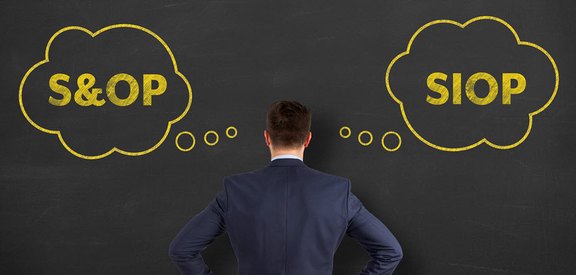Many of our customers refer to “sales, inventory, and operations planning” (SIOP) rather than “sales and operations planning” (S&OP). But what´s the difference? The ASCM Supply Chain Dictionary, which can be accessed for free, explains S&OP as “A process to develop tactical plans that provide management the ability to strategically direct its businesses to achieve competitive advantages on a continuous basis by integrating customer-focused marketing plans for new and existing products with the management of the supply chain. The process brings together all the plans for the business (sales, marketing, development, manufacturing, sourcing, and financial) into one integrated set of plans…”
There is no explicit definition of SIOP in the dictionary, but in today’s traditional manufacturing environments, there truly is no difference between the two terms. How you execute the process should be the same regardless of whether you use the “I” or not. For some, moving from S&OP to SIOP is a step of maturity or an evolution of their process. For most manufacturers inventory is an integral part of insuring customer satisfaction. Thus having the right inventory at the right time and place is essential. It’s also important to recognize that a successful process requires team members to jointly optimize production and inventory based on customer demand. This means creating a supply plan that maximizes profit by reviewing and planning for the three chief constraints: suppliers, people, and machines.
A mature SIOP process would create as a primary metric the inventory turns reported at an aggregated level. Slower turns may then indicate a lower-level inventory problem and would force a review to determine if action is required. The review may indicate challenges in consistent over-forecasting, major new product or promotion launches, supplier transitions or related issues, or seasonal fluctuations. The goal of the review is not to just change the forecast to “make the numbers look good” but to make sure actions are assigned to optimize the SIOP process that optimizes working capital.
The million-dollar question: “How do you know that your SIOP is improving cash flow?” SIOP no doubt saves millions with optimized inventory levels, less expediting, reduced overtime, and so on. What companies struggle with is linking those improvements with the SIOP process to demonstrate tangible savings. Most leaders know that an SIOP process is the right thing to do based on their experience, so they accept that a productivity gain will occur without requiring proof. These are the organizations that have the most success with SIOP. However, some leaders require productivity goals from the SIOP team, which may potentially fracture the process.
In the Sales and Operations Planning (S&OP) Implementation workshop, we will guide participants through the process of implementing S&OP and getting the buy in from all stakeholders. The ASCM Planning Certificate provides technical knowledge and strategies for synchronized planning. Do any of the programs fit your needs? Feel free to use the free knowledge tests:
Register quickly and take advantage of the opportunity to receive input directly from industry experts!

